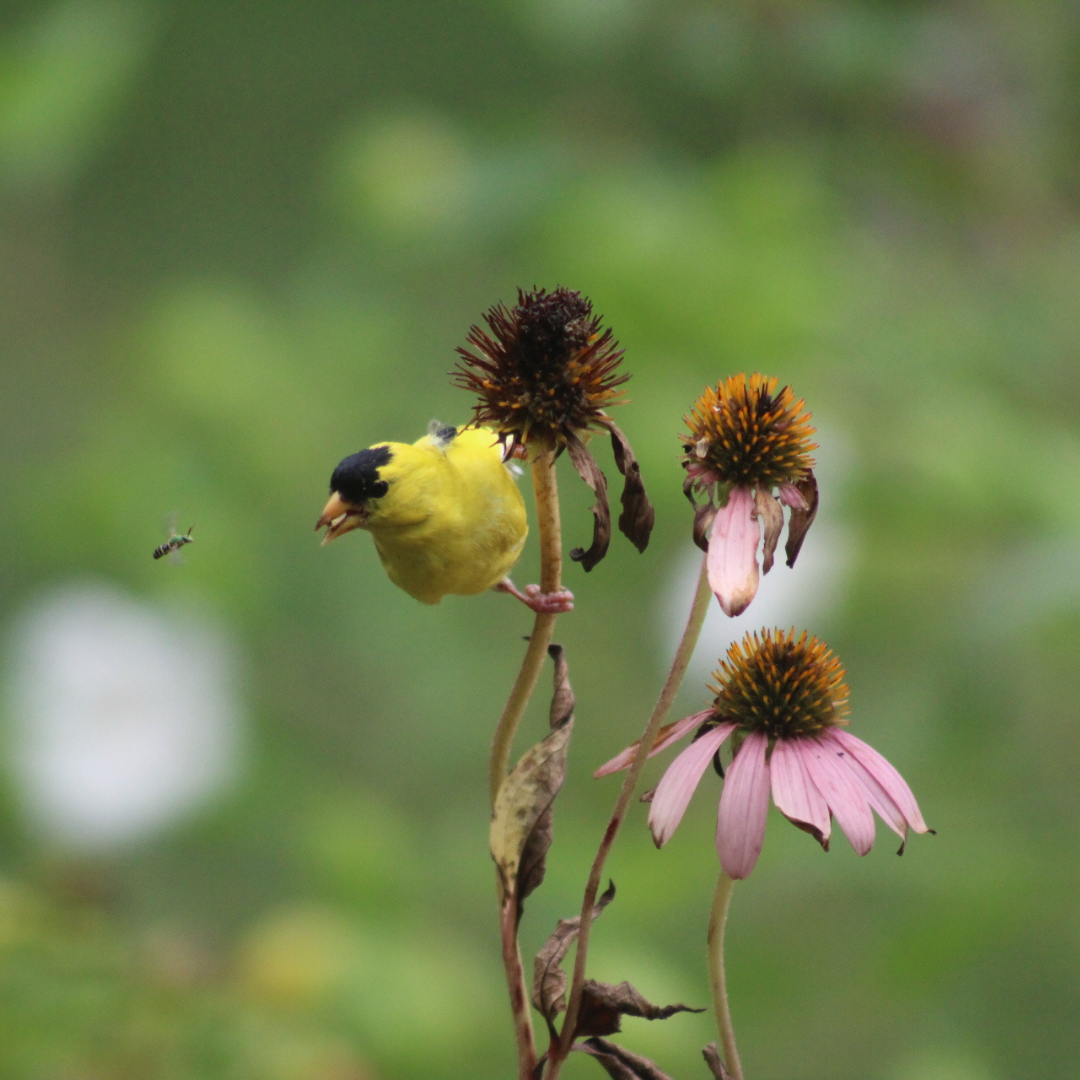Blog
Well Kept but Wild
.png)
by Cassie Barnes, Digital Communications Specialist
The largest irrigated crop in America is probably not what you think. It’s the approximately 50,000 square miles of turf grass lawns throughout the U.S.
All those yards require A LOT of maintenance—mowing, trimming, watering, fertilizing, pest control, and more. In fact, about 50-75% of household total clean water is for outdoor use—much of that is in watering lawns to keep them green. Then, contaminated with our lawns’ fertilizers and pesticides, this water runs off and returns to our lakes and rivers. All in all, yards’ negative environmental impacts outweigh their positives by a longshot.
That’s why Cory Christopher, Director of Conservation at Cincinnati Nature Center, is trying to change hearts and minds away from turf lawns to prairies.
.png)
From a Desert to an Oasis
“Building houses breaks up natural spaces and our lawns perpetuate that disruption,” Cory says. “But you don’t need grass to have a welcoming outdoor space. You can gain that with a little planning, patience, and planting of native plants.”
That’s where the Nature Center’s Restorative Landscaping team comes in.
“It’s about developing a more prairie-like aesthetic for properties and large yards,” Cory says. “We help people and businesses create beautiful landscapes by transforming their outdoor areas into prairie landscapes. Sometimes this means planting a literal large prairie—like we would on a multi-acre old field. Other times, it’s identifying which areas of a homeowner’s lawn could be rtransformed into a nano-version of a prairie that is a bit more groomed and tamed than the larger, wilder prairies. This can even include adding native shade trees and shrubs to create bits of oasis for wildlife and pollinators in the suburban desert.”

Creating a Chain of Oases
As more homeowners turn to transforming their turf lawns to prairie havens, it will cause a chain reaction of positive changes for our environment. There will be more habitat for wildlife. Plus, less water and fewer chemical fertilizers and pesticides will be used.
In short, it will strengthen the natural world around us and beyond.
“We have to change the ways we think about our lawns,” Cory says. “What we’re doing now is unsustainable. Every yard can be a living prairie—well kept, but wild—that welcomes neighbors and wildlife alike.
“Plus, it’s a lot less work, worry, and money in the long run.”